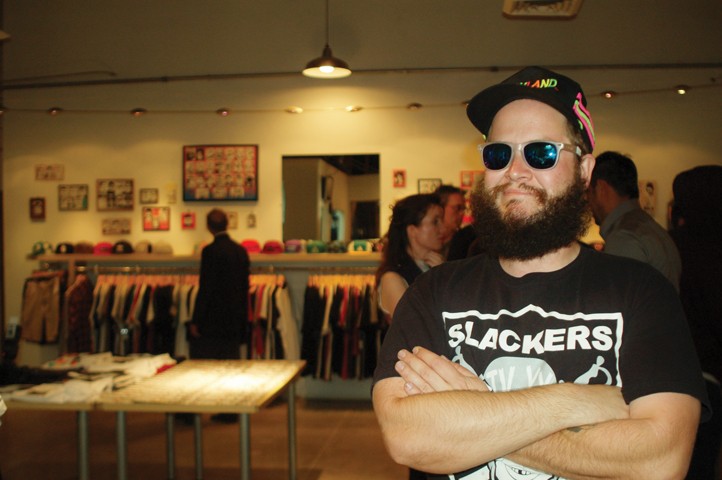A ghost of the Wild West haunts Tucson’s art scene. Visitors might catch glimpses of iconographic culture tucked neatly into the crevices of streets downtown, framed on walls and strewn about in. The black and white art, stark and robust, is a familiar sight to passersby, though the artist may be unknown to them.
Now a mystery no more, artist Danny Martin is causing a good ole-fashioned stir in Tucson’s arts scene.
With a Southern drawl indicative of his sweet Alabama roots, 33-year-old Martin is a trailblazer in the town. Martin is more than a fleeting presence. He was the artist and designer behind this month’s Zocalo magazine, recently exhibited his Western mixed-media work at Hotel Congress and will display his latest body of ’80s-centric stickers at downtown skate shop BLX through mid-May.
“That’s really where my bread is buttered, in just making images,” Martin said, “making images that are resonating with people.”
Martin came west nearly eight years ago to receive his Master of Fine Arts in printmaking at the UA, graduating in 2008, and he has lived in the desert ever since. Enticed by the small-town, big-city charm of Tucson and with a penchant for Western novelty, Martin’s work has adapted the colorful past of the Sonoran Desert into black and white.
“I don’t want to be just another barking voice; it’s not really my personality,” Martin said. “What I’m projecting is the stuff that I care about, you know? Like, shit, I care about movies; I care about Western movies; I care about comic books.”
Working primarily in black and white printmaking and illustration and some mixed media, Martin’s art deliberately lacks color. The decidedly polarizing contrasts result in the whimsy of his vintage Western and pop culture images. His art is not simple in the least.
“My images just don’t look as good in color because that’s not the way I’m thinking, that’s not the way I’m seeing it,” he said.
Even Martin’s outlook reflects the black and white nature of his art. He regards his work as a self-fulfilling journey, one in which he is creating a lasting image of the past and establishing his own longevity as an artist.
“It’s not referencing the original history, it’s referencing the mythology of the history, which is what media is,” Martin said of his work. “It’s our mythology, it’s our storytelling. It’s how we reflect our values even if we don’t think that’s what we’re doing.”
Martin’s black and white sensibility leaves no room for illusion. A sense of realness emanates Martin, his art and his attitude — the despite occasional drawbacks of his career.
“It’s not like if I had a more streamlined career choice, all of my struggles go away because I’ve got that white picket fence and some outdated idea of what the American dream is that disappeared with our working class,” Martin said.
Martin measures success in terms of his ability to share his art within a community; he has no illusions of being an “art machine” on a corporate scale or fear of appearing cliché.
“I am coming from a very real viewpoint of loving this particular type of work,” he said. “Not having money is scary as shit, but what am I going to do, cash in my personality? Trade it in for someone else who gives a shit about that stuff? I can’t. This isn’t a hobby; this is my job.”









